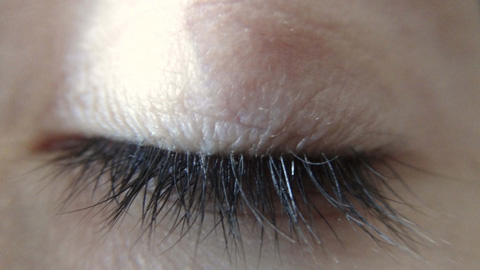Media Professionals Blink Less Than Non-Media Professionals

10/05/2017
Media professionalisation affects eyeblink rate. According to a recent study, published in PLOS ONE, media professionals blink less than others, even when they are looking at the real world. In a previous study by these authors, it was proven that media professionalisation affected eyeblink rate during media consumption. In this new work, researchers show that the lower eyeblink rate in media professionals happens not only when they are watching screens, but also when they are looking at live events.
Eyeblink has cognitive and physiological functions. Eyeblink rate has been linked to attention. At the same time, blinking lubricates the eye and a low eyeblink rate can provoke insufficient lubrication, and this may cause eye health problems. Since low eyeblink rates can cause eye problems, results from this research invite to think that the eyeblink rate of media professionals should be taken into account not only when they are watching screens, but also when they are looking at reality. The most surprising result of this research is that the watching of screens steadily over time and making concomitant decisions with a high level of attention, as media professionals do, decreases eyeblink rate not only in media contexts, but also during live events.
Furthermore, researchers compared visual perception of reality with that of screens. They showed that the type of stimuli (reality versus screens) affects eyeblink rate in media professionals: watching screens inhibits eyeblink rate when compared to looking at the real world. However, this phenomenon is not as clear in the non-media professionals group. Authors of this study are now studying whether similar effects happen in gamers and video-clip consumers.
For this study, participants were shown different videos and a real theatrical representation. All stimuli had the same content, narrative, actions, duration and character. Eyeblink rate to screened stimuli was compared to the one to real stimulus. A special stage for carrying out stimulus presentation was designed (Image 1). It had two different areas: at the back, there was a black backdrop for the real representation; in the front part, there was a black panel with a hole for the screen showing the videos. Whenever the live play had to be presented, the screen used for the videos was removed.
Electromyographic activity of the orbicularis oculi muscle was monitored with a wireless EEG system.
Media professionals of the Spanish Radio and Television Corporation (RTVE) participated in this research. They were coordinated by the Instituto RTVE. This research was developed by Celia Andreu-Sánchez and Miguel Ángel Martín-Pascual at Neuro-Com, Universitat Autònoma de Barcelona, and by Agnès Gruart and José María Delgado-García at the Neuroscience Division, Universidad Pablo de Olavide in Seville.